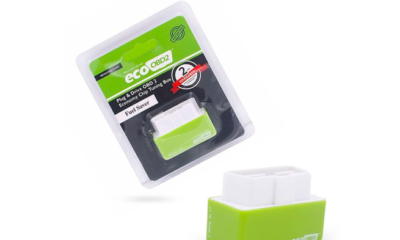Business
Report Shows Disney Dethrones Apple as the Most Intimate Brand in the World

Every year MBLM does a Brand Intimacy Study to find which brands customers are most loyal to. It is the largest study of its kind, surveying 6,000 consumers. Participants are asked questions about which brands they use regularly, how they feel about those brands, and if they feel that they could live without the brands’ products.
This year, Disney managed to top Apple for the first time ever. Other brands in the top ten list included Amazon, Chevrolet, Netflix, Harley Davidson, Playstation, and YouTube. To see all of the details, you can download the full Brand Intimacy Study on MBLM’s website.
It’s not surprising that Disney has built such a strong following. With the Avengers and the Marvel Universe rocking the box office, related merchandise, shows, and events are drawing in record-breaking crowds. And, this is only the cherry on top of the Disney empire.
Disney has been a household name for generations. From Mickey Mouse to Disneyland to the Disney Channel to Star Wars and on and on. Disney has been on a solid growth trajectory for years and there’s no end in sight. Part of the reason that Disney is so successful is that it prioritized its relationship with consumers.
Brand intimacy has a significant impact on a company’s ability to survive and thrive.
According to MBLM’s Brand Intimacy Study, building brand intimacy creates price resilience and builds customer loyalty.
According to Digital Authority Partners, when consumers feel a bond with a brand, they are willing to pay more for their product than the product of a competitor. MBLM says that many of these consumers are willing to pay up to 20% more.
This willingness stems from an emotion-centered marketing strategy. For Disney in particular, nostalgia plays a big part in their marketing campaigns. The longevity of the brand has allowed for devoted consumers to pass their favorite movies or toys on to their children through multiple generations. The desire to purchase a product is pursued by a child and a parent.
The ability to pass on this brand intimacy to the next generation is made possible by a willingness to keep up with new technology. If Disney still produced the same sketch-cartoons of Steamboat Willie, the company would have died out decades ago. However, Disney is always looking for ways to stay in the spotlight.
A great example of this is Disney’s upcoming streaming service, Disney+.
The way that we view movies and TV shows is changing. Streaming services like Netflix and Hulu have paved the way for others. Disney, seeing this opportunity, has opted to remove their content from these streaming services so that they can remain exclusive to their own service.
Judging by the results of the Brand Intimacy Study, this will be a successful venture.
With big brands like Disney or Amazon, it can be extremely difficult to build a name for yourself as an emerging business. But, brand intimacy may be the answer to this problem.
It’s not enough anymore to have a good product. It’s so easy for another, bigger company to come along and start selling a similar product–and they already have the customer loyalty to back it up.
One great way for businesses to differentiate is to start building that emotional attachment with their customers by adopting a data-driven marketing approach. Business can build a connection by gauging customers’ interests with regards to what matter the most to them.
One strategy that has been leveraged more and more in recent years is the practice of giving back to a cause that a company’s target audience is passionate about. That is in line with recent report findings which show that Generation Z (young people aged 16 to 30) are particularly interested in giving back to the community according to a recent study.
To that effect, for example, Kool8, a company in Chicago that produces water bottles, has put in place a very clear give-back policy for their products. For every bottle that is sold, 20% of the profit will go towards providing clean drinking water for underprivileged areas of the world.
Another example is the Tiesta Tea Foundation. They work to support people in economic hardship, raise awareness and acceptance for people with special needs or disabilities, and also work to bring clean drinking water to developing countries.
These businesses go above and beyond distributing their product to help others in need and build brand intimacy. By working to solve problems that consumers care about, they earn their business and their loyalty. These tactics create an emotional bond with the product that the consumer would not typically feel with a new business or product.
Focusing on brand intimacy is a new norm for successful businesses. We’ve seen the success of a good brand intimacy building campaign from Disney, and you can bet that they are not going anywhere any time soon.
Business
High Volume, High Value: The Business Logic Behind Black Banx’s Growth

In fintech, success no longer hinges on legacy prestige or brick-and-mortar branches—it’s about speed, scale, and precision. Black Banx, under the leadership of founder and CEO Michael Gastauer, has exemplified this model, turning its high-volume approach into high-value results.
The company’s Q1 2025 performance tells the story: $1.6 billion in pre-tax profit, $4.3 billion in revenue, and 9 million new customers added, bringing its total customer base to 78 million across 180+ countries.
But behind the numbers lies a carefully calibrated business model built for exponential growth. Here’s how Black Banx’s strategy of scale is redefining what profitable banking looks like in the digital age.
Scaling at Speed: Why Volume Matters
Unlike traditional banks, which often focus on deepening relationships with a limited set of customers, Black Banx thrives on breadth and transactional frequency. Its digital infrastructure supports onboarding millions of users instantly, with zero physical presence required. Customers can open accounts within minutes and transact across 28 fiat currencies and 2 cryptocurrencies (Bitcoin and Ethereum) from anywhere in the world.
Each customer interaction—whether it’s a cross-border transfer, crypto exchange, or FX transaction—feeds directly into Black Banx’s revenue engine. At scale, these micro-interactions yield macro results.
Real-Time, Global Payments at the Core
One of Black Banx’s most powerful value propositions is real-time cross-border payments. By enabling instant fund transfers across currencies and countries, the platform removes the frictions associated with SWIFT-based systems and legacy banking networks.
This service, used by individuals and businesses alike, generates:
- Volume-based revenue from transaction fees
- Exchange spreads on currency conversion
- Premium service income from business clients managing international payroll or vendor payments
With operations in underserved regions like Africa, South Asia, and Latin America, Black Banx is not only increasing volume—it’s tapping into fast-growing financial ecosystems overlooked by legacy banks.
The Flywheel Effect of Crypto Integration
Crypto capabilities have added another dimension to the company’s high-volume model. As of Q1 2025, 20% of all Black Banx transactions involved cryptocurrency, including:
- Crypto-to-fiat and fiat-to-crypto exchanges
- Crypto deposits and withdrawals
- Payments using Bitcoin or Ethereum
The crypto integration attracts both retail users and blockchain-native businesses, enabling them to:
- Access traditional banking rails
- Convert assets seamlessly
- Operate with lower transaction fees than those found in standard financial systems
By being one of the few regulated platforms offering full banking and crypto support, Black Banx is monetizing the convergence of two financial worlds.
Optimized for Operational Efficiency
High volume is only profitable when costs are contained—and Black Banx has engineered its operations to be lean from day one. With a cost-to-income ratio of just 63% in Q1 2025, it operates significantly more efficiently than most global banks.
Key enablers of this cost efficiency include:
- AI-driven compliance and customer support
- Cloud-native architecture
- Automated onboarding and KYC processes
- Digital-only servicing without expensive physical infrastructure
The outcome is a platform that not only scales, but does so without sacrificing margin—each new customer contributes to profit rather than diluting it.
Business Clients: The Value Multiplier
While Black Banx’s massive customer base is largely consumer-driven, its business clients are high-value accelerators. From SMEs and startups to crypto firms and global freelancers, businesses use Black Banx for:
- International transactions
- Multi-currency payroll
- Crypto-fiat settlements
- Supplier payments and invoicing
These clients tend to:
- Transact more frequently
- Use a broader range of services
- Generate significantly higher revenue per user
Moreover, Black Banx’s API integrations and tailored enterprise solutions lock in these clients for the long term, reinforcing predictable and scalable growth.
Monetizing the Ecosystem, Not Just the Account
The genius of Black Banx’s model is that it monetizes not just accounts, but entire customer journeys. A user might:
- Onboard in minutes
- Deposit funds from a crypto wallet
- Exchange currencies
- Pay an overseas vendor
- Withdraw to a local bank account
Each of these actions touches a different monetization lever—FX spread, transaction fee, crypto conversion, or premium service charge. With 78 million customers doing variations of this at global scale, the cumulative financial impact becomes immense.
Strategic Expansion, Not Blind Growth
Unlike many fintechs that chase customer acquisition without a clear monetization path, Black Banx aligns its growth with strategic market opportunities. Its expansion into underbanked and high-demand markets ensures that:
- Customer acquisition costs stay low
- Services meet genuine needs (e.g., cross-border income, crypto access)
- Revenue per user grows over time
It’s not just about acquiring more customers—it’s about acquiring the right customers, in the right markets, with the right needs.
The Future Belongs to Scalable Banking
Black Banx’s ability to transform high-volume engagement into high-value profitability is more than just a fintech success—it’s a signal of what the future of banking looks like. In a world where agility, efficiency, and inclusion define competitive advantage, Black Banx has created a blueprint for digital banking dominance.
With $1.6 billion in quarterly profit, nearly 80 million users, and services that span the globe and the blockchain, the company is no longer just scaling—it’s compounding. Each new user, each transaction, and each feature builds upon the last.
This is not the story of a bank growing.
This is the story of a bank accelerating.
-

 Tech4 years ago
Tech4 years agoEffuel Reviews (2021) – Effuel ECO OBD2 Saves Fuel, and Reduce Gas Cost? Effuel Customer Reviews
-

 Tech6 years ago
Tech6 years agoBosch Power Tools India Launches ‘Cordless Matlab Bosch’ Campaign to Demonstrate the Power of Cordless
-

 Lifestyle6 years ago
Lifestyle6 years agoCatholic Cases App brings Church’s Moral Teachings to Androids and iPhones
-

 Lifestyle4 years ago
Lifestyle4 years agoEast Side Hype x Billionaire Boys Club. Hottest New Streetwear Releases in Utah.
-

 Tech7 years ago
Tech7 years agoCloud Buyers & Investors to Profit in the Future
-

 Lifestyle5 years ago
Lifestyle5 years agoThe Midas of Cosmetic Dermatology: Dr. Simon Ourian
-

 Health6 years ago
Health6 years agoCBDistillery Review: Is it a scam?
-

 Entertainment6 years ago
Entertainment6 years agoAvengers Endgame now Available on 123Movies for Download & Streaming for Free
